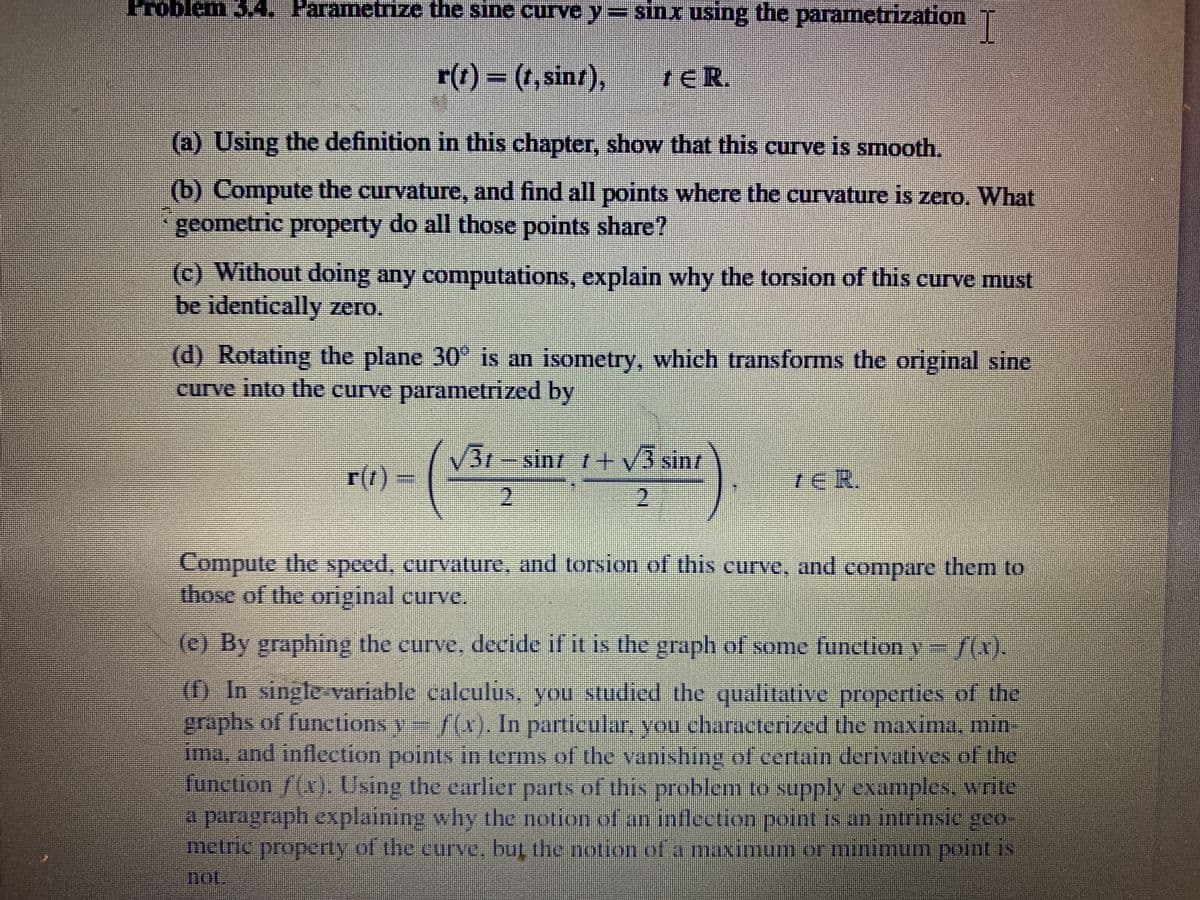Parametrize the sine curve y = sinx using the parametrization r(t)=(t,sint), t ∈ R. (a) show that this curve is smooth. (b) Compute the curvature, and find all points where the curvature is zero. What geometric property do all those points share? (c) Without doing any computations, explain why the torsion of this curve must be identically zero. (d) Rotating the plane 30◦ is an isometry, which transforms the original sine curve into the curve parametrized by r(t) = √3t −sint 2 , t + √3 sint 2 , t ∈ R. Compute the speed, curvature, and torsion of this curve, and compare them to those of the original curve.
Parametrize the sine curve y = sinx using the parametrization r(t)=(t,sint), t ∈ R.
(a) show that this curve is smooth.
(b) Compute the curvature, and find all points where the curvature is zero. What geometric property do all those points share?
(c) Without doing any computations, explain why the torsion of this curve must be identically zero.
(d) Rotating the plane 30◦ is an isometry, which transforms the original sine curve into the curve parametrized by r(t) = √3t −sint 2 , t + √3 sint 2 , t ∈ R. Compute the speed, curvature, and torsion of this curve, and compare them to those of the original curve.
(e) By graphing the curve, decide if it is the graph of some function y = f(x).
(f) In single-variable calculus, you studied the qualitative properties of the graphs of functions y = f(x). In particular, you characterized the

“Since you have posted a question with multiple sub-parts, we will solve the first three sub-parts for you. To get the remaining sub-part solved please repost the complete question and mention the sub-parts to be solved.”
Given the sine curve
(a)
For a parametrized curve
In our case, .
Both components of the derivative is continuous and is not simultaneously zero since
Therefore, the curve is smooth.
Trending now
This is a popular solution!
Step by step
Solved in 4 steps with 8 images






